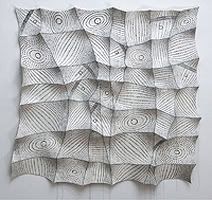The original screwball comedies of the 1930s introduced a momentary reversal of romantic roles, in which the lead female comedienne devises madcap routines in order to snag the leading man. We realize as these movies progress, that the screwball veteran, which includes Katherine Hepburn, Jean Arthur and Barbara Stanwyck, may be nutty but she certainly is not the fool or the sociopath that she makes herself out to be. Even in the tail end years of the original comedies, Marilyn Monroe, tottering in her high heels and batting her eyelashes, and looking much more daft than the earlier cast, is a good deal more savvy than she lets on. Through their unabashed zany acts which drive their leading men berserk, the leading ladies’ ultimate goal is to get these artless and unsuspecting men to declare love and marriage, although the women never declare anything themselves. Karyn Kay, a feminist film critic, wryly observes that screwball really is, “A reiteration of this man-above-woman world order ”[1], making these 1930s films one of the most conservative film genres to come out of Hollywood.
Not surprisingly, this type of film has garnered few fans from the feminists, who should have every reason to like a high-spirited woman that gets what she’s after. In his book Screwball Comedy, Wes D. Gehring observes, “Feminists…have ambivalent feelings toward the heroine. They generally tend to like her madcap means but have difficulty accepting the end: all this for a man” [2].
Filmmakers continue to revive screwball comedies, although they are few and far between. Our second category of heroines, the good students of feminism, focuses its frenzied energy not on the leading man, but on some other (preferably inanimate) item. This is usually a career, made more meaningful tied to a good cause. The 2001 and 2003 Legally Blonde series captures this exceptionally well. Reese Witherspoon, playing the ditzy but smart Elle Woods (she went to Harvard, after all), finds her true screwball comedic moments as a lawyer exposing a corrupt cosmetics firm in her pink suites and retro pillbox hats. Melanie Griffith is another working girl, this time a secretary who furtively takes over her absent boss’ projects in 1988’s aptly titled Working Girl. She is more interested in maneuvering her company through business deals, with the help of women’s magazines, than in getting the leading man. Both films still manage screwball comedy’s compulsory ending of a happy couple, but with the men clearly working hard to get their career-focused, but finally complaisant, leading ladies.
Confessions of a Shopaholic is the third installment to screwball comedy, but with a brand new twist – the self-absorbed, addictive personality. Rebecca Bloomwood, played by the talented Australian newcomer Isla Fisher, has some $16,000 in credit card debt from her out-of-control shopping sprees for designer clothes. “When I shop the world gets better, the world is better; and then it's not anymore and I have to do it again,” she confesses.
Rebecca’s earlier model is Renée Zellweger’s Brigitte Jones, from the 2001 Brigitte Jones’s Diary, who is an overweight career girl that cannot get her food addiction under control. Brigitte crosses the thin line from the career girl with a cause, embodied by Legally Blonde’s Elle, to a career girl beset by addictions and self-absorption. Rebecca and Brigitte are women who spend their energy not in acquiring respectability and stability through marriage (although Brigitte is obsessed by romance), or in emulating their predecessor feminist screwballs by trying to do some good with their money and career. No, they are caught up in some kind of self-indulgent, often materialistic, preoccupation that consumes their time and energy. The screwball heroine has transformed herself into the self-centered Oprah feminist of the twenty first century, where everything is about gratifying “me”.
We first encounter Rebecca as she confronts a glitch in her shopping life when she gets laid off. She desperately accepts a new job at a financial firm to maintain her shopping addiction, much to the ridicule of her best friend Suze. “Don't you think it is ironic that Rebecca Bloomwood is advising people on money? ” asks Suze. “I have a plan,” replies Rebecca, true to the spirit of a screwball heroine. Her plan is to work her way up the ladder to land at a more appropriate fashion company. Of course, all this is a by-product of her obsession with clothes. She starts to shine at her new job due her sympathetic boss, Luke Branford, and a quirky financial advice column she writes, and she finally does get offered a position at the fashion company. But a new job and a successful column notwithstanding, Rebecca’s biggest nightmare is a debt-collector who “stalks” her to exact what she owes.
As she hops, skips, jumps and lies to keep acquiring new clothes on her over-charged credit card, and to avoid the debt collector who’s circling in on her, Rebecca finally gets serious about a “shopaholics anonymous” group. On her committed visit she introduces herself as, “I'm Rebecca Bloomwood and I'm a shopaholic!...I have a plan.” This time, Rebecca’s plan is to sell her designer clothes at an auction to pay off her gargantuan debt. As expected, she succeeds. And we would like to believe that she is cured of her affliction, and her nuttiness.
The film signs off with the signatory happy ending of screwball comedies. Rebecca gets the guy (Luke, her boss). Or more like the guy gets Rebecca, a continued twist in the screwball romance where a bemused male is the cautious pursuer of the distracted female.
Nevertheless, Rebecca has charm, and is an endearing character, although certainly giddy. Even her fashion sense is led by some inner voice which tells her to wear pink with orange, thanks to director Paul Hogan, a fellow Australian, who makes this movie a pleasure to watch by dressing Rebecca in flamboyant clothes and showering us with kaleidoscopic colors. Rebecca’s gaffes are soon forgotten by her friends, whom she had hurt numerous times, and she inadvertently (it definitely wasn’t part of the plan) gets the leading man in the end. We’re not sure, though, if this entails a marriage proposal – this is Screwball 3.0, after all.
Try as it might, feminism could not influence screwball comedy with its woman-above-man world order, even in its heyday of Reese Witherspoon’s daffy lawyer (or is it lawyeress?). To have a happy ending, one needs a happy couple. Usually that means what the original screwball comediennes knew very well: there’s no messing around (permanently, at least) with the world order. Even Rebecca seems to have acknowledged that.
1. Kay, Karyn. Part-time work of a domestic slave. Alexander Kluge. Film Quaterly. October 1975, Vol. 29, No. 1. Page 56.
2. Gehring, Wes D. Screwball Comedy A Genre of Madcap Romance. Westport, Conn : Greenwood Press, 1986. Page 155.
































